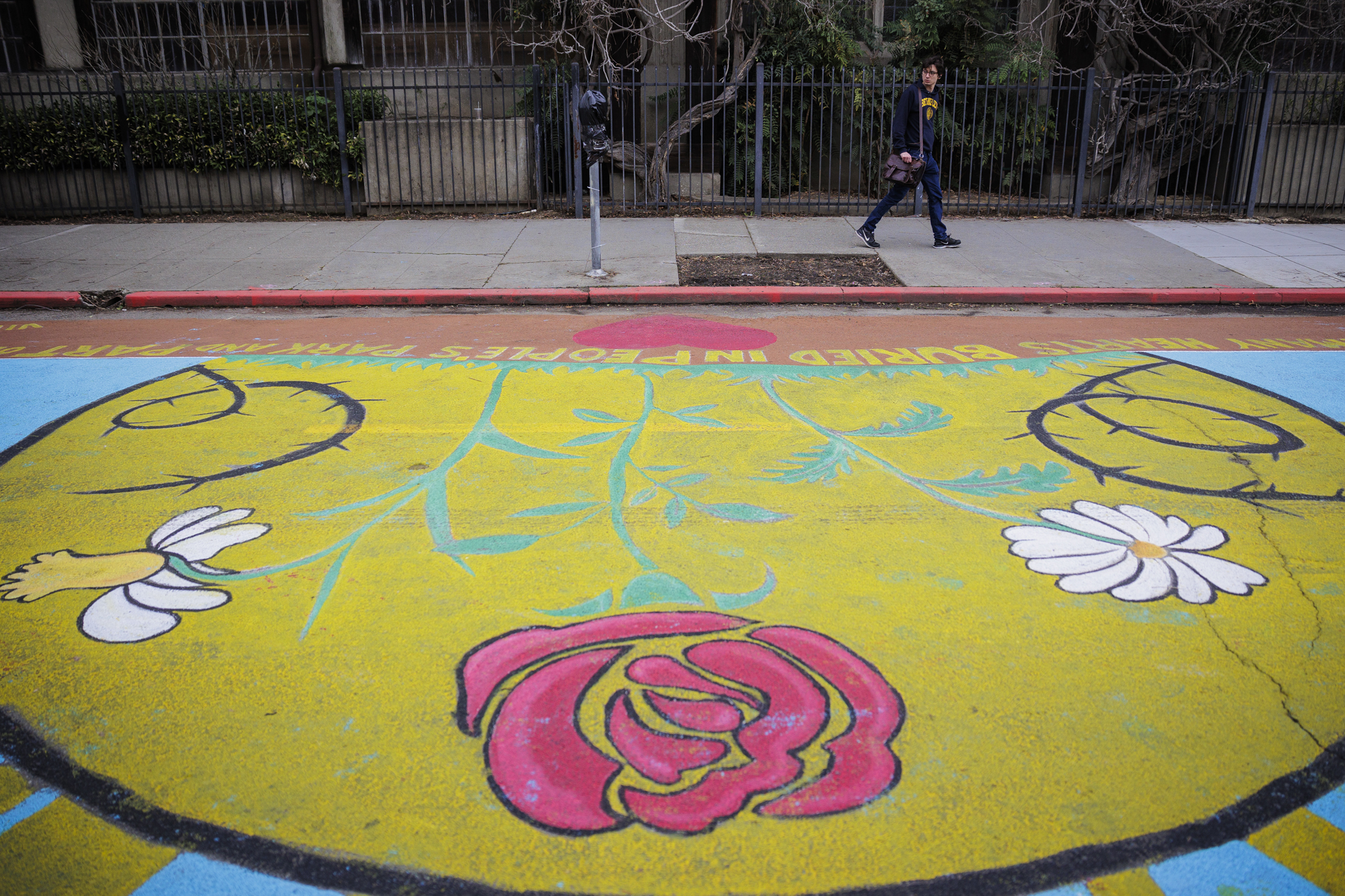On Sunday, Feb. 11, a group gathered at the site of People’s Park in Berkeley to paint a collaborative mural were derailed by sudden police intervention.
The mural — created in chalk, and made to be washed away — was designed by longtime muralist and organizer David Solnit, who was onsite Sunday directing a crew of helpers and community advocates.
Solnit’s design draws on Berkeley history, with references to the city’s “nuclear free” legacy and a depiction of a hand pushing back against imposed changes. A line from Berkeley’s well-known street poet Julia Vinograd reads: “There are many hearts buried in People’s Park, and part of my own as well.”

The peaceful action was first announced on PeoplesPark.org, and drew a crowd of about 80 before the arrival of police.
In attendance was Lisa Teague, a formerly unhoused community member who has lived in the neighborhood since 2011, and who observed Sunday as young children, high schoolers, Cal students and adults contributed to the mural.





